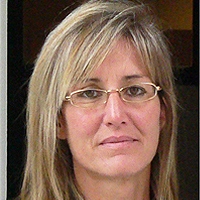Chaos to Cosmos: Quantum Whispers and the Cosmic Genesis
Published on: 4th February, 2025
Quantum fluctuations, usually arising from the inherent uncertainty in the quantum fields, are pivotal in understanding the universe at both the small and large scales. Even though fluctuations are usually unobservable and rather small, they give significant observable effects during specific epochs under specific conditions. During the early epochs of the universe, the fluctuations were scaled, resulting in the primordial density perturbations that gave rise to the large-scale structure of the universe and the observed inhomogenities. In this paper, we study the basic origin, structure, evolution, and imprints of fluctuations during the inflationary period resulting in large-scale structure formation. We use the Mukhanov-sasaki formalism to model scalar perturbations, embedding the theoretical results into observations. Theoretical predictions show an almost scale-invariant power spectrum with stringent constraints on the inflationary parameters. It further states that in the very early universe, the inflatons that are quanta of the primordial field were highly filled in the degenerate quantum state. This carries large potential energy that results in an exponential expansion of the universe. During post post-inflationary period the inflaton dominated the Universe’s energy density; they interact among themselves and due to non-linear effects, these inhomogeneities grow which amalgamate into spatially distinguishable patches in our observable universe. Our understanding projects us towards the fact that fluctuations play a pivotal role in understanding the structure formation at micro, macro, and far-macro scales. This study also addresses the significance of quantum fluctuations in cosmic evolution and manifests the enduring relevance in addressing some of the profound mysteries of our universe.
A case report of Hypocomplementemic urticarial vasculitic syndrome presenting with Renal failure
Published on: 12th September, 2018
OCLC Number/Unique Identifier: 7856112439
We present a case of hypocomplementemic urticarial vasculitic syndrome (HUVS) who developed severe renal failure requiring ICU-level care. Our patient is a 66-year-old man who presented with abdominal pain, rash, confusion, oliguria, and shortness of breath. He was found to be in acute renal failure with leukocytosis and elevated lactate. Work-up for infectious, autoimmune, and hematologic malignant diseases was negative. The presence of chronic urticaria, abdominal pain, hypocomplementemia, and leukocytoclastic vasculitis on skin biopsy confirmed the diagnosis of HUVS. He required hemodialysis for renal failure as well as gastrostomy tube placement for nutritional support secondary to the development of mucosal ulcers, a rare finding in HUVS. He recovered with several months of high-dose steroids and hemodialysis. This case highlights the effectiveness of steroids for initial treatment of HUVS, and the relapsing and remitting nature of the disease. Providers should also be aware of the broad range of presenting symptoms such as mucosal lesions that may require nutritional support. Interestingly, unlike many previously reported cases of HUVS, our patient had not yet developed signs and symptoms of systemic lupus erythematosus, which often overlaps with HUVS.
Consequence of birth year, type, sex, season and flock on birth weight trait of Kajli sheep
Published on: 10th August, 0220
OCLC Number/Unique Identifier: 8652201950
The liaison of birth weight to neonatal and mature vigor is especially given important if have the acquaintance of factors distressing in birth weight. Unbiased Best linear prediction of breeding values was estimated from pedigree birth weight records of 13715 Kajli sheep of livestock Experiment Station Khizerabad born 1994 to 2010, and Livestock Experimental Station, Khushab. Data records were statistically analyzed by means of using computer programmed Mixed Model Harvey’s Least Squares and Maximum Likelihood. An animal model was used for heritability estimation following Maximum Likelihood procedure. Estimates of birth weight heritability in Kajli sheep were 0.05 ± 0.019. The estimated breeding values of both forms for males, females, and sire were calculated with significant variation. Both farms data were analyzed by using an animal model program. The squares mean slightest for weight at birth (kg), remained 4.13 ± 0.01 kg. In addition, birth of the year, the birth of type, flock and sex significantly affects the (p < 0.001) trait of birth weight. The domino effect of the current study has rational implications not only for sheep husbandry nevertheless as well as for amplified acquaintance of parameters which drastically persuade deviation of weight in birth as weight in birth has become itself noteworthy forecaster of anon fitness outcomes. These results showed the decreasing genetic and static phenotypic at birth weight. It is likely that there are complex interactions between genetics and environmental factors of parental, placental and fetal origin. Birth weight is highly influenced trait by maternal nutrition, genes, care, management, climate, seasonal variation and type of birth.
Lessons from the success and failures of peritoneal Dialysis-Related Brucella Peritonitis in the last 16 years: Case report and Literature review
Published on: 31st December, 2018
OCLC Number/Unique Identifier: 7964745961
Brucellosis is a zoonotic infection that is endemic in some Mediterranean countries, North Africa and the Middle East. Brucella is a rare cause of peritonitis in Peritoneal Dialysis (PD) population and in non-dialysis patients alike. We report here a challenging case of PD-related Brucella peritonitis in a 45-year-old Saudi male with late peritonitis that delivered some key learning throughout its course from presentation, diagnosis and treatment to catheter salvage attempts so as to circumvent PD failure. We provide an in-depth review of limited published literature on PD-related Brucella peritonitis (seven cases, and present case) and summarized the data on key clinical characteristics, management and PD technique outcome to benefit nephrologists when encountered with this rare presentation.
Extracorporeal Shock Wave Combined with Traditional Chinese Medicine Bone-setting Manipulation for External Humeral Epicondylitis: A Randomized Clinical Trial
Published on: 23rd July, 2024
Objective: The purpose of this study was to evaluate the clinical efficacy of extracorporeal shock waves combined with traditional Chinese medicine bone-setting manipulation for external humeral epicondylitis. Methods: Ninety-two patients with external humeral epicondylitis were randomly divided into an observation group and a control group. Patients in the control group were treated with extracorporeal shock waves while those in the observation group with traditional Chinese medicine bone-setting manipulation based on the control group. Patients in both groups were evaluated by the Visual Analogue Scale (VAS), Mayo Elbow Performance Score (MEPS), and Disabilities of the Arm, Shoulder, and Hand Questionnaire (DASH) before and after treatment. The inflammatory factors such as IL-6, IL-10, TNF-ɑ, and clinical outcomes were contrasted before and after treatment. Results: There were statistically significant differences in VAS score, MEPS score, and DASH score between the two groups before and after treatment (p < 0.05). The observation group exhibited a more pronounced improvement in each score compared to the control group. Post-treatment, the inflammatory factors of both groups were significantly lower than pre-treatment levels (p < 0.05), with the observation group showing a more noticeable decrease. The overall effectiveness of the observation group was higher than that of the control group, and the difference was statistically significant (p < 0.05).Conclusion: The combination of extracorporeal shock wave therapy and traditional Chinese medicine bone-setting manipulation can effectively alleviate pain symptoms and improve dysfunction caused by external humeral epicondylitis, while also reducing inflammatory factor expression. This combined treatment may prove more effective than extracorporeal shock wave therapy alone.Clinical Trial: Registration: ChiCTR2200066075.
West Africa's Drought Dynamics: An Investigation of SPI and SPEI indices (1979-2021)
Published on: 24th July, 2024
West Africa’s population is projected to reach 500 million by 2050, exacerbating the need for reliable drought detection and management strategies to ensure food and water security. This study investigated drought detection in West Africa using the Standardized Precipitation Index (SPI) and Standardized Precipitation Evapotranspiration Index (SPEI). The objective is to evaluate the performance of SPI and SPEI in detecting droughts and compare their strengths and limitations. The results revealed that both indices detected droughts effectively, but SPEI was more sensitive to evapotranspiration and temperature change. The findings offer valuable insights into climate change impacts, drought monitoring, and sustainable water resource management in the regions under investigation in West Africa.
A Further Example Showing Efficiency of a Modeling Method Based on the Theory of Dynamic Systems in Pharmacokinetics
Published on: 25th January, 2017
OCLC Number/Unique Identifier: 7317655701
Aims: To present a further example showing an efficiency of a modeling method based on the theory of dynamic systems in pharmacokinetics.
Study design:The goals of the current study were twofold: to present (1) a further example showing efficiency of a modeling method based on the theory of dynamic systems in pharmacokinetics, an to perform (2) a next step in tutoring the use of computational and modeling tools from the theory of dynamic systems in pharmacokinetics.
The data available in the study by Plusquellec et al. published in the October Issue of the Journal Medical Engineering & Physics were used to exemplify the method considered here. For modeling purpose an advanced mathematical modeling method was employed. Modeling was performed using the computer program named CTDB described in the study by Dedík et al. published in September 2007 issue of the Journal Diabetes Research and Clinical Practice.
Main outcome: Modeling results revealed that computational and modeling tools from the theory of dynamic systems can be successfully used in the development of a mathematical model of such a complicated process as is a multiple sites discontinuous gastrointestinal absorption.
Classification of diseases using a hybrid fuzzy mutual information technique with binary bat algorithm
Published on: 30th January, 2021
OCLC Number/Unique Identifier: 8530268032
Genetic datasets have a large number of features that may significantly affect the disease classification process, especially datasets related to cancer diseases. Evolutionary algorithms (EA) are used to find the fastest and best way to perform these calculations, such as the bat algorithm (BA) by reducing the dimensions of the search area after changing it from continuous to discrete. In this paper, a method of gene selection was proposed two sequent stages: in the first stage, the fuzzy mutual information (FMI) method is used to choose the most important genes selected through a fuzzy model that was built based on the dataset size. In the second stage, the BBA is used to reduce and determine a fixed number of genes affecting the process of classification, which came from the first stage. The proposed algorithm, FMI_BBA, describes efficiency, by obtaining a higher classification accuracy and a few numbers of selected genes compared to other algorithms.
Cumulative Effect Assessment: preliminary evaluation for Environmental Impact Assessment procedure and for environmental damage estimation
Published on: 9th October, 2017
OCLC Number/Unique Identifier: 7286424596
The paper presents and develops the issue of Cumulative Effect Assessment (CEA) in the Environmental Impact Assessment (EIA) screening procedure established by the State and Regional regulations In Italy. In the period 2001-15 in the territory of the Venice province (north east Italy, Veneto region) n. 328 projects (and the related environmental preliminary/definitive studies) were applied to competent Authorities (6% to the State, 39% to the Region and 55% to the Province). All the Environmental Impact Studies (EISs) and Environmental Preliminary Studies (EPSs) referring to the this territory officially applied to competent Authorities in the period 2001-2010, have been analysed with focus on the identification and assessment of cumulative effects (CEs); the projects considered and analysed for this purpose comprise a total of n. 181 EIA screening and ordinary procedures; the remaining 147 projects in the period 2011-15 (for a total of 328) are here considered only for statistical reason to an update assessment of project typologies in the same territory.
The methodology applied for the analysis of the sample of environmental studies in the period 2001-10 refers to that presented by Cooper and Sheate (2002) with modifications. The investigation has been developed looking for the way in which the topic is performed by practitioners in the environmental studies as from qualitative as well as quantitative point of view. Specific attention has been paid to waste management plants which are always subject to EIA screening procedure since 2008 according to Directive 97/11/EEC and in case to the whole EIA procedure. The approach proposed by Lombardia Region (North Italy; 2010) for EIA screening procedure of waste management plants has been applied to identify CEs and modified according to the characteristics of the considered territory; it allows the performance of the project-based approach and must be completed with a regional-based approach (Dubè, 2003). The proposed approach can be useful in case of waste management and IPPC (Integrated Pollution Prevention and Control, Directive 96/61/EEC, amended with Directives 2008/1/EC and 2010/75/EU) plants to define the financial warranties required for the authorization of operative activity of the plants to cover potential environmental damages produced in cases of accidents and other conditions as required in Europe (art. 14 Directive 2004/35/EC on environmental liability).
Several project categories were chosen and their EISs analysed as an exemplificative case according to the potential generation of cumulative impacts and the characteristics of the territory. With reference to the completed procedures where the competent Authority presented a final judgement, it has been observed that the CEA has been seldom developed due to not compulsory legal requirements as already observed by Burris and Canter (1997). Moreover, when it is considered, the methodology is limited and not systemized. Indices of impact have been identified according to emission for the main environmental components focussed with the analysis of the pressure factors of the plants. The study points out the need to analyse and evaluate the cumulative effects (CEs) at a strategic level (within the Strategic Environmental Assessment-SEA- procedure) with a view to preparing the study for EIA/EPS framework procedure for the projects derived from the corresponding plan/program. A sound knowledge of the considered territory and in particular of its pressure sources is of main importance for CEA assessment and impacts’ prevention. Geographic Information Sytesm (GIS) application is strongly needed for pressure sources’ census and control data storing
Laryngeal Xanthogranulomatosis: A Case Report
Published on: 23rd August, 2024
Xanthogranulomatosis is an uncommon disease affecting non-Langerhans histiocytes. Laryngeal involvement is very rare.We describe the clinical case of an adult patient with disseminated xanthogranulomas affecting the supraglottic region of the larynx, leading to thickening and immobility of the epiglottis. The patient experienced inspiratory dyspnea on exertion. A transoral supraglottic epiglottectomy was performed, and a tracheostomy was subsequently required.




